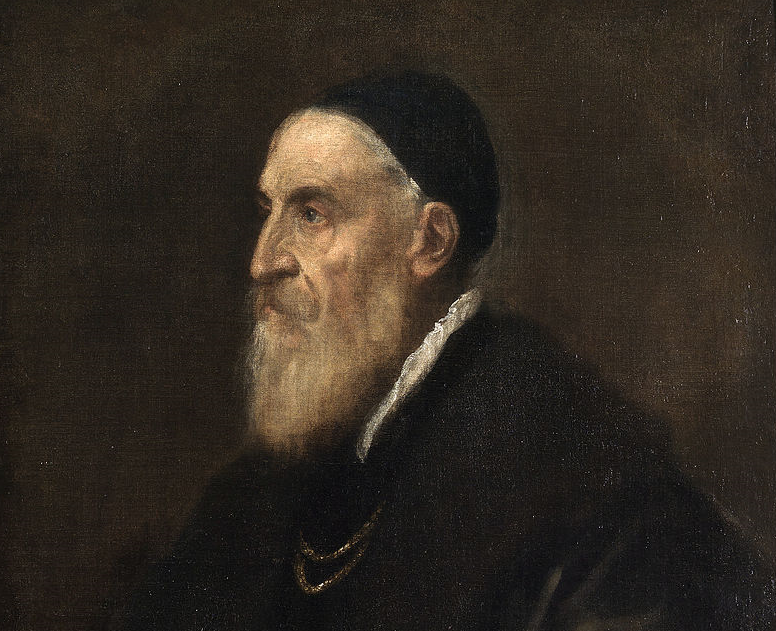Titian, one of the most prominent Renaissance artists, was born as Tiziano Vecelli or Vecellio in Cadore, in the Republic of Venice sometime around 1488 to 1490. Regarded as the most important Renaissance member of the 16th-century Venetian school of art, he was called ‘The Sun Amidst Small Stars’, echoing the final line of Dante’s Paradiso. He was a versatile painter in all genres: portraits, landscape backgrounds, mythological and religious projects. It is interesting and amusing that Titian is thought to have misinformed people of his age during his lifetime.


Titian did not come from a family of hereditary artists. He was a son of Gregorio Vecellio and his wife Lucia; his father served as superintendent of the castle of Pieve di Cadore and ran local mines for their owners. Many of Titian’s ancestors and relatives were established notaries in Venice, so the family were well-connected and respected in the territories ruled by the Venetian Doge. Why did Titian become interested in the arts, then? The painter Sebastian Zuccato, who was a friend to his family, arranged for two brothers – Titian and Francesco – to become apprentices in the workshop of the elderly Gentile Bellini, from which they later transferred to that of his brother Giovanni Bellini. Francesco Vecellio, Titian’s older brother, became a painter in Venice.
The fresco of Hercules on the Morosini Palace is one of Titian’s earliest works in addition to the Belliniesque ‘Gypsy Madonna’. One of the first portraits by Titian is ‘A Man with a Quilted Sleeve,’ created about 1509 and believed to be depicting Ludovico Ariosto, although some modern scholars reckon that it is a portrait of Gerolamo Barbarigo. Later, Titian became an assistant of the already famous Giorgione from the Venetian School (born Giorgio Barbarelli da Castelfranco), but due to the young man’s talent an intense rivalry followed between them. Nonetheless, thanks to his relationship with Giorgione, who had also been trained in Giovanni Bellini’s workshop, Titian developed his early expressive style that awakened a sense of admiration even on the eve of his fame. Indeed, the Giorgionesque appearance of his early works is illustrated by their pastoral mood and tones. After Giorgione’s death in 1510, Titian started his independent career in Venice.
In 1511, Titian worked in Padua on the frescoes in the Carmelite church in the Scuola del Santo in the ‘Scuola del Santo’. His style now exhibited fullness of forms, compositional confidence coupled with artistic approach to paintings, and chromatic balance. His masterful use of brushwork made Titian the foremost painter in Venice. After his return to Venice, Titian was granted a patent – the so-called La Sanseria or Senseria (a privilege for artists), but he could fully obtain this patent only after Giovanni Bellini’s death in 1516. The artist was appointed superintendent of the government works, including to paint frescoes in the ducal palace.
Titian departed from his Giorgionesque style to his own monumental style, which is nowadays easily recognizable in the world. Starting from 1516, Lady Fortune smiled upon the artist: Titian was an unrivaled leader of the Venetian School of art for about 60 years. Completed in 1516, his ‘Assumption of the Virgin’ for the high altar of the Basilica di Santa Maria Gloriosa dei Frari (it is kept there) produced a sensation because of the innovate approach to colorism and the painting’s execution on a grand scale. Titian’s other famous painting is ‘the Pesaro Madonna’ (he worked on it between 1519 and 1526), also for the Frari church, which demonstrates classical order and freedom in the traditional groups of donors, holy saints, and persons moving in aerial space.

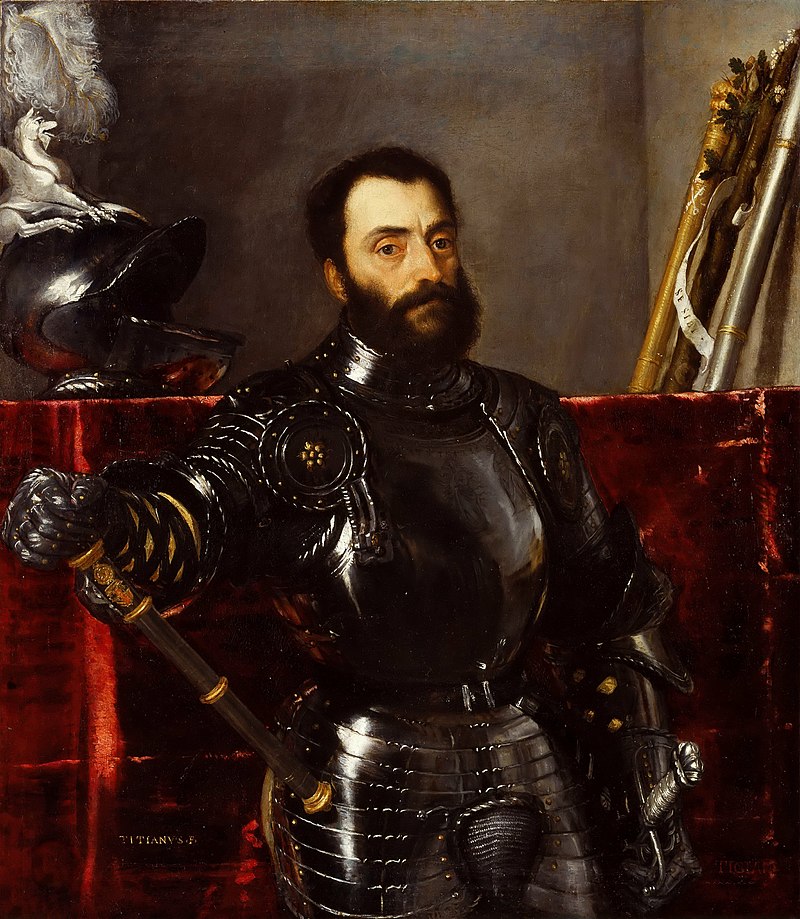
Titian created a series of small Madonnas placed amid lovely landscapes. He also established himself as a talented portraitist, whose services were in high demand from many aristocratic Italian families. In the 1520s and 1530s, he created an impressive gallery of the leading aristocrats of Italy. Among them, there is the portrait of Alfonso d’Avalos, Marques del Vasto (1533), who is depicted resplendent in his armor ornamented with gold and accompanied by a small page whose head reached his waist. Afterwards, Titian often introduced a secondary person in his portraits to stress the grand station of a sitter. The portrait of Francesco Maria della Rovere, Duke of Urbino, was completed between 1536 and 1538: Duke Francesco is depicted as a military leader clad in armor and holding the baton in hand with the three others in the background. The portrait of the Venetian Doge Andrea Gritti is as one of the finest of all Titian’s portraits, where Gritti’s ferocious expression and imposing figure convey authority and serve as a symbol of his office – a ruler of Venice.
Titian became so famous in Europe that Pope Paul III and the House of Farnese, to whom the Supreme Pontiff belonged, competed for his services with Charles V, Holy Roman Emperor. In 1543, the artist journeyed to Bologna and painted the official portrait of Pope Paul III without cap, where the old pontiff is shown as a symbol of the Holy See, yet his eyes and expression make Paul look like a crafty statesman. In 1545-46, Titian traveled to Rome and stayed in the Belvedere Palace of the Vatican, where he had the opportunity to see the masterpieces of Michelangelo, Raphael, and others. However, the contemplation of their works influenced his own style only to a small degree, for Titian was a mature painter. It was when Titian completed the celebrated portrait ‘Pope Paul III and his Grandsons’, who were Cardinal Alessandro Farnese and Ottavio Farnese.

The cultural magnificence of Rome led the artist to start a series of mythological paintings with reclining Venuses. They include: ‘The Venus of Urbino’ and ‘Venus and Love’, which are now kept in the Uffizi Gallery in Florence, Italy, and ‘Venus with an Organist and Cupid’, which is in Museo Nacional del Prado in Madrid, Spain. They illustrate the influence of his contact with ancient sculpture in Rome. These paintings emphasize the idealized beauty of the nude goddess of love, also hinting at the beauty of music and vision. One of Titian’s most significant creations in this genre is ‘the Danae with Nursemaid’, when the naked Danae lies on her couch, knees raised, while Jupiter descends to her in the form of golden rain, with her nursemaid trying to catch the coins in her apron. This work showcases the sheer magnificence of Titian’s achievement in color and artistic approach to the composition, and it is the most voluptuous one in his repertory.
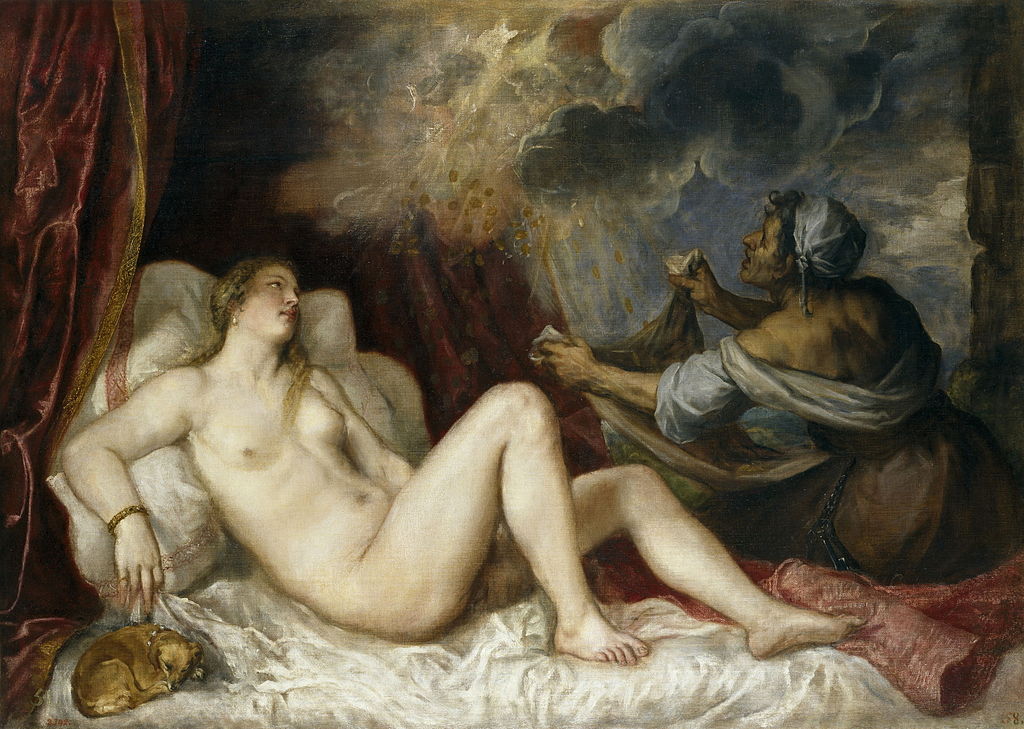
One of my favorite Titian’s painting is ‘The Rape of Europa’ completed in his late years in 1560-1562; now it is on display in the Isabella Stewart Gardner Museum of Boston, Massachusetts, USA. It is one of the merriest of the artist’s “poesies” (“poems”), as he called his mythological creations. A surprised Europa is carried off, arms and legs flying, on the back of Jupiter in the form of a garlanded white bull. A putto depicted as a chubby, naked little boy on the back of a dolphin is mimicking her, and cupids in the sky add an air of amorous merriment to the scene. Looking at this painting, we feel a sense of movement them while contemplating the stunning seascape and the mountainous shore. I also adore the painting ‘Bacchus and Ariadne’, which belongs to one of his early mythological works finished in 1522-1523: it portrays Theseus, whose ship is showed in the sea, as he is leaving Ariadne at Naxos, but then Bacchus arrives, jumps from his chariot, and raises Ariadne to heaven after instantly falling in love with her. It is one of a series of mythological paintings commissioned by Alfonso I d’Este, Duke of Ferrara, to adorn the walls of his Camerino d’Alabastro – a private room in his palazzo in Ferrara, decorated with classical paintings.
‘Christ Crowned with Thorns’, done in 1542-43, was commissioned by the confraternity of Santa Maria delle Grazie in Milan. During the Napoleonic occupation of Italy, the painting was delivered to France and is now kept in the Musée du Louvre in Paris. The references to antiquity are apparent: Christ’s figure reminds that of Laocoon – an antique statue discovered in Rome in 1506. Titian included the bust of the Roman Emperor Tiberius: although the Romans had Christ crucified, the painter demonstrates his respect to the classical past. Overall, no Christian can look at this work without a shudder and thinking how much the Lord suffered for people’s sins before and after His crucifixion. The Romans’ atrocities against Christianity are illustrated in this painting: the Lord’s tormentors twist the crown onto His head with their canes, and their burly muscular figures add a sense of the ancient time’s sheer brutality to the scene. The beauty of Titian’s colors allows us to notice that Jesus’ suffering is somewhat relieved through their vibrancy.

Titian ended his relationship with the Farnese family in 1546. It is remarkable that he was not paid for his pictures, for perhaps Pope Paul believed that even a famous painter should work free of charge just because the Supreme Pontiff commissioned his works. Titian’s first association with the House of Habsburg started in 1533 when he completed the illustrious portrait of Charles V, Holy Roman Emperor, with a hunting dog. As Charles had extended his invitations to Titian in the past, the artist finally voyaged to Augsburg in the winter of 1548 to join the Imperial court.
His first work for the House of Habsburg was the stunning ‘Equestrian Portrait of Charles V’ (also called ‘Charles V at Mühlberg’), where the emperor is portrayed in his brilliant armor and astride his stallion; the painting’s deep reds are associated with battle and heroism. I am not fond of Emperor Charles V in the slightest, but I love his portrait due to Titian’s talent. This work was commissioned to commemorate the emperor’s victory in the Battle of Mühlberg of 1547 against the Protestants. The armor, with its gleaming highlights and reflected color, as well as the rose sash across the chest (a symbol of the Catholic party and the Holy Roman Empire), together with the awesome sunset in the background make this work spellbinding. Pleased with the respect to him and the lucrative commissions, the artist continued working for the Habsburg family.
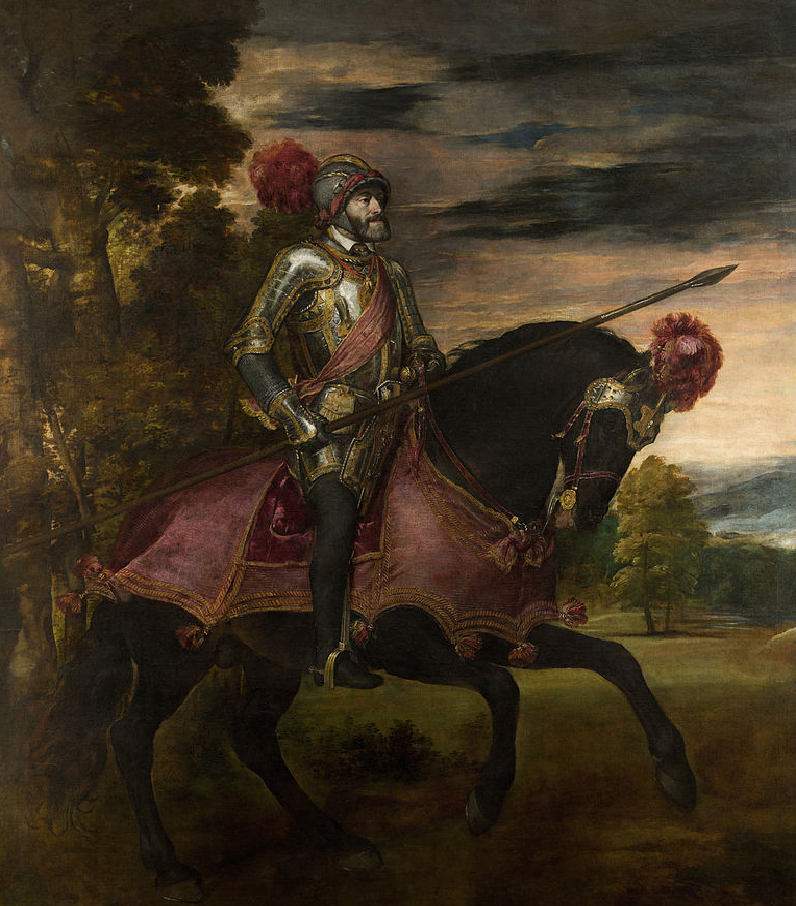
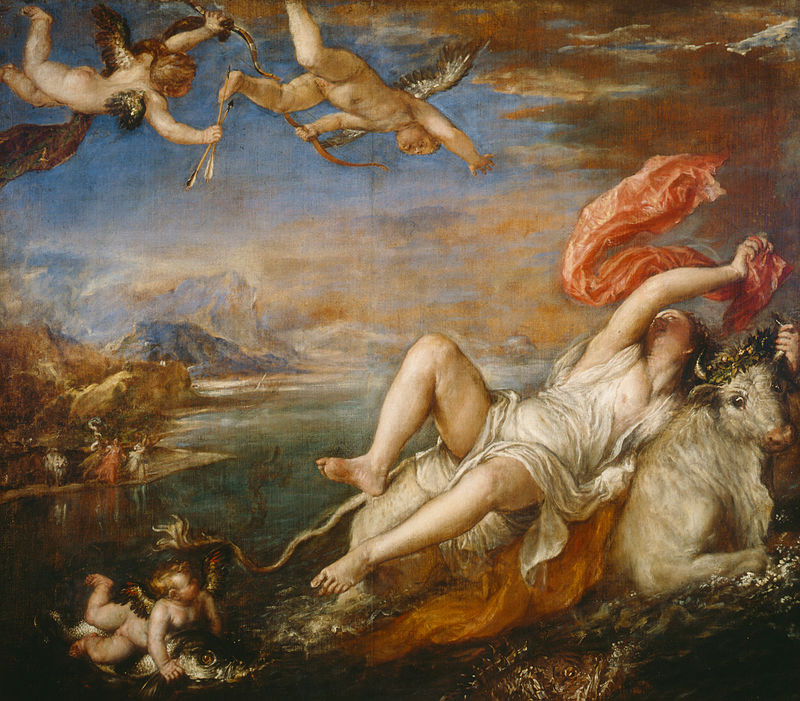
On the emperor’s orders, in 1548 Titian painted the grand portrait of Isabella of Portugal, Holy Roman Empress. This work was executed years after her death, using her old painting for reference, because Charles never recovered from the death of his beloved spouse. In this portrait, Isabella is depicted sitting next to a window opening on a landscape, which was a traditional composition for a portrait, which had been used before by Raphael and Leonardo da Vinci. At the beginning of the 1550s, Titian traveled to Milan and Augsburg again to paint the emperor’s only surviving son – Philip, Prince of Asturias (later King Philip II of Spain). They met twice: in Milan in 1549 and in Augsburg in 1550, and Titian completed Philip’s portrait on both occasions. The artist painted a handsome young man, treating his haughty face gently and making his Habsburg lip less protruding.
Titian became rather self-critical in his later eyes. He altered his style due to his absolutely free use of the brush, taking a less descriptive approach to his late paintings. For Philip II, Titian created a series of mythological paintings, another set of his “poesies”, mostly from Ovid, including my favorite painting ‘The Rape of Europa’ and the other one which I’m fond of – ‘Perseus and Andromeda’ painted in 1554-56. The latter portrays the heroic Perseus flying through the air to kill the sea monster who intends to murder Andromeda, chained to a cliff by the sea shore for him – Perseus wounds him and saves her. In the late 1560s and early 1570s, Titian’s style commenced resembling something akin to a vision of abstraction and modern impressionism.
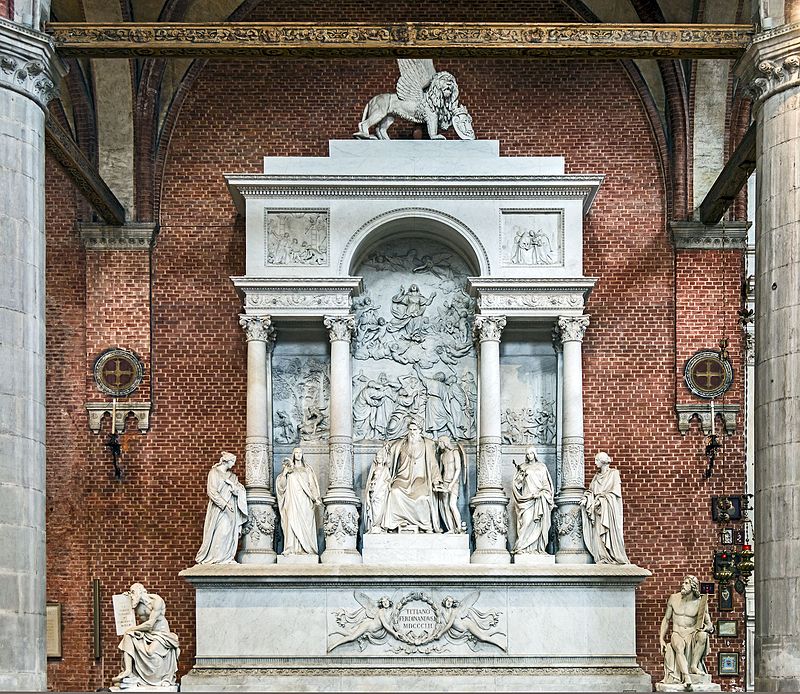
When he was extremely old, Titian relocated back to his native Venice. As his birthdate is unknown, we don’t know how old he was when he passed away of a severe fever on the 27th of August 1576 when the plague devastated the city. His age is estimated to be 87 or 88 years old. The artist was buried in the Basilica di Santa Maria Gloriosa dei Frari, and his Pietà was produced by Iacopo Negretti, better known as Jacopo or Giacomo Palma il Giovane. Remarkably, Titian is interred in an unmarked grave under his own painting ‘The Madonna di Ca’ Pesaro’. Not being an inventor and a scientist like Leonardo Da Vinci, or a great architect and sculptor like Michelangelo, Titian was a genius of painting, one who was extremely successful in all branches of his art.
All images are in the public domain.
Text © 2020 Olivia Longueville

